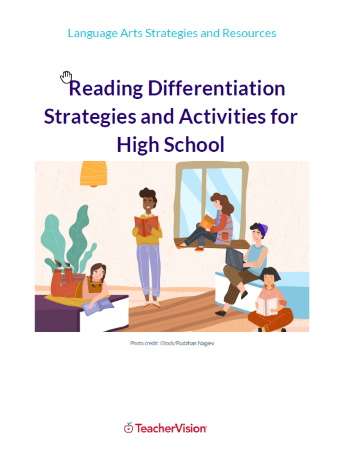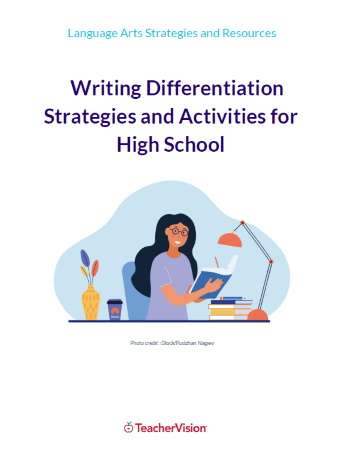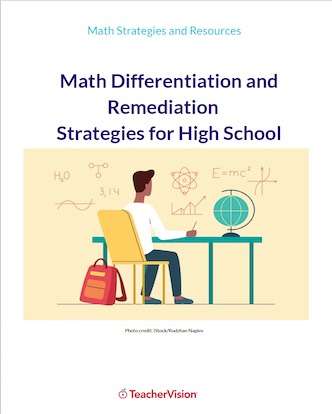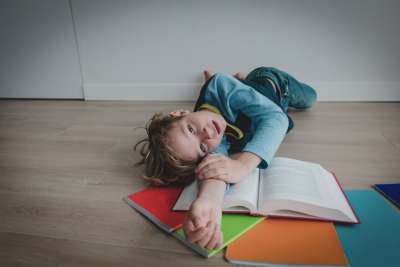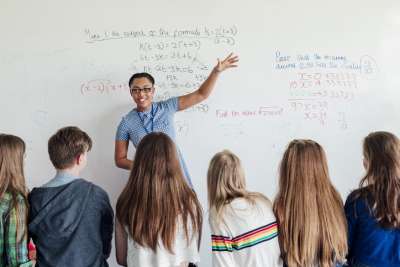Although each of these subgroups has unique problems, they all require an environment that will nurture their gifts, attend to the learning disability, and provide the emotional support to deal with their inconsistent abilities. Four general guidelines can assist professionals in developing programs that will meet the needs of these students.
- Focus attention on the development of the gift. Remediation of basic skills historically has been the single focus of efforts to serve students once they have been classified as learning disabled. Few opportunities exist for bright students with learning disabilities to demonstrate gifted behaviors. Research has shown that a focus on weaknesses at the expense of developing gifts can result in poor self-esteem, a lack of motivation, depression, and stress (Baum, 1984; Whitmore & Maker, 1985). In addition to offering remediation, focused attention on the development of strengths, interests, and superior intellectual capacities is necessary. The students need a stimulating educational environment which will enable them to fully develop their talents and abilities. Enrichment activities should be designed to circumvent problematic weaknesses and to highlight abstract thinking and creative production.
Over the last six years, the state of Connecticut has funded a variety of special programs for gifted students who have learning disabilities. All the programs have emphasized the development of gifts and talents of these students. The results of the projects showed dramatic improvement in student self-esteem, motivation, and productive learning behaviors. Improved achievement in basic skills for many students has been an unexpected bonus (Baum, 1988). In fact, according to Whitmore and Maker (1985), more gains are seen when intervention focuses on the gift rather than the disability.
- Provide a nurturing environment that values individual differences. According to Maslow's Hierarchy of Needs (1962), individuals must feel like they belong and are valued in order to reach their potential or self-actualize. How valued can a student feel if the curriculum must be continually modified, or assignments watered down, to enable the student to achieve success? Currently, only certain abilities are rewarded by schools, primarily those that involve strong verbal proficiency. Indeed, according to Howard Gardner (1983), schools spend much of their time teaching students the skills they would need to become college professors. Success in the real world depends on skills or knowledge in other areas besides reading and writing.
A nurturing environment – one that shows concern for developing student potential – values and respects individual differences. Students are rewarded for what they do well. Options are offered for both acquiring information and communicating what is learned. The philosophy fosters and supports interdependence; students work in cooperative groups to achieve goals. Multiple intelligences are acknowledged; a well-produced video production about life in the Amazon is as valued as the well-written essay on the same topic. In such an environment no child will feel like a second-class citizen, and the gifted students with learning disabilities can excel.
- Encourage compensation strategies. Learning disabilities tend to be somewhat permanent. A poor speller will always need to check for errors in spelling before submitting a final draft. Students who have difficulty memorizing mathematics may need to use a calculator to assure accuracy. Thus, simply remediating weaknesses may not be appropriate or sufficient for the gifted learning disabled student. Remediation will make the learner somewhat more proficient, but probably not excellent, in areas of weakness. For instance, students who have difficulty with handwriting will ultimately fare much better if allowed to use a computer to record their ideas on paper than they will after years of remediation in handwriting. The following list outlines suggestions for providing compensation techniques to assist the student in coping with problematic weaknesses typical of the learning disabled student:
- Find sources of information that are appropriate for students who may have difficulty reading. Some examples are visitations, interviews, photographs, pictorial histories, films, lectures, or experimentation. Remember, these children do not want the curriculum to be less challenging or demanding. Rather, they need alternative ways to receive the information.
- Provide advanced organizers to help students receive and communicate information. Students who have difficulty organizing and managing time also benefit from receiving outlines of class lectures, study guides, and a syllabus of topics to be covered. Teach students who have difficulty transferring ideas to a sequential format on paper to use brainstorming and webbing to generate outlines and organize written work. Provide management plans in which tasks are listed sequentially with target dates for completion. Finally, provide a structure or visual format to guide the finished product. A sketch of an essay or science project board will enable these students to produce a well-organized product.
- Use technology to promote productivity. Technology has provided efficient means to organize and access information, increase accuracy in mathematics and spelling, and enhance the visual quality of the finished product. In short, it allows students with learning disabilities to hand in work of which they can feel proud. Preventing these students from using word processing programs to complete all written assignments is like prohibiting blind children from using texts printed in Braille!
- Offer a variety of options for communication of ideas. Writing is not the only way to communicate; all learning can be expressed and applied in a variety of modes. Slides, models, speeches, mime, murals, and film productions are examples. Remember, however, to offer these options to all children. Alternate modes should be the rule rather than the exception.
- Help students who have problems in short-term memory develop strategies for remembering. The use of mnemonics, especially those created by students themselves, is one effective strategy to enhance memory. Visualization techniques have also proved to be effective. Resources are listed at the end of this digest.
- Find sources of information that are appropriate for students who may have difficulty reading. Some examples are visitations, interviews, photographs, pictorial histories, films, lectures, or experimentation. Remember, these children do not want the curriculum to be less challenging or demanding. Rather, they need alternative ways to receive the information.
- Encourage awareness of individual strengths and weaknesses. It is imperative that students who are gifted and learning disabled understand their abilities, strengths, and weaknesses so that they can make intelligent choices about their future. If a goal that is important to such a student will require extensive reading, and if reading is a weak area, the student will have to acknowledge the role of effort and the need for assistance to achieve success. "Rap" sessions, in which these students can discuss their frustrations and learn how to cope with their strange mix of abilities and disabilities, are helpful. Mentoring experiences with adults who are gifted and learning disabled will lend validity to the belief that such individuals can succeed.
Conclusion
In the final analysis, students who are both gifted and learning disabled must learn how to be their own advocates. They must ultimately choose careers that will accentuate their strengths. In doing so they will meet others who think, feel, and create as they do.
One such student, after years of feeling different and struggling to succeed, was finally able to make appropriate decisions about what he truly needed in his life. He was an outstanding amateur photographer who loved music. He had also started several "businesses" during his teenage years. In his junior year at college he became depressed and realized that he was totally dissatisfied with his coursework, peers, and instructors. He wondered whether he should quit school. After all, he was barely earning Cs in his courses. His advisor suggested that he might like to create his own major, perhaps in the business of art. That was the turning point in this young man's life. For the first time since primary grades, he began to earn As in his courses. He related that he finally felt worthwhile. "You know," he said, "finally I'm with people who think like me and have my interests and values. I am found!"
References
Baum, S. (1984). "Meeting the needs of learning disabled gifted children." Roeper Review, 7, 16-19.
Baum, S. (1988). "An enrichment program for gifted learning disabled students." Gifted Child Quarterly, 32, 226- 230.
Baum, S. & Owen, S. (1988). "High Ability/Learning Disabled Students: How are they different? " Gifted Child Quarterly, 32, 321-326.
Fox, L. H., Brody, L. and D. Tobin (Eds.) (1983). Learning disabled gifted children: Identification and programming. Baltimore, MD: Allyn & Bacon.
Gardner, H. (1983). Frames of mind: The theory of multiple intelligences. New York, NY: Basic Books, Inc.
Maslow, A. (1962). Toward a psychology of being. Princeton, NJ: Van Nostrum.
Renzulli, J. (1978). "What makes giftedness: Reexamining a definition." Phi Delta Kappan, 60, 180-184.
Whitmore, J. (1980). Giftedness, conflict, and underachievement. Boston, MA: Allyn and Bacon.
Whitmore, J. & Maker, J. (1985). Intellectual giftedness among disabled persons. Rockville, MD: Aspen Press.
Resources
Webbing and Mind-Mapping
Heimlich, J. E. and S.D. Pittleman. (1986). Semantic mapping: Classroom applications. Newark, DE: International Reading Association.
Large, C. (1987). The clustering approach to better essay writing. Monroe, NY: Trillium Press.
Rico, G. L. (1983). Writing the natural way. Los Angeles, CA: J. P. Tarcher.
Visualization Techniques to Improve Memory
Write to Trillium Press, PO Box 209, Monroe, NY 10950 for information on the following materials.
Bagley, M. T. Using Imagery to Develop Memory.
Bagley, M. T. Using Imagery in Creative Problem Solving.
Bagley, M. T. ,and K.K. Hess. Two Hundred Ways of Using Imagery in the Classroom.
Hess, K. K. Enhancing Writing Through Imagery.


